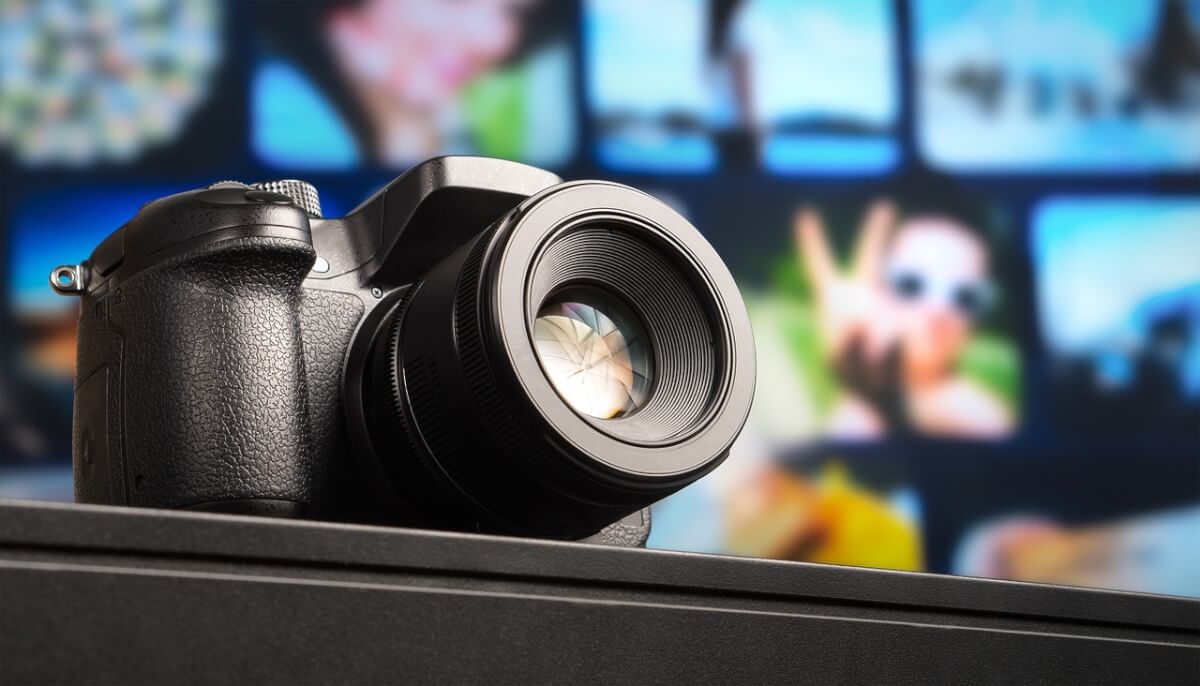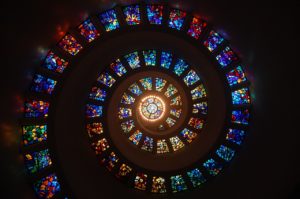The focal length of your lens is it’s main characteristic. It determines your angle of view, that is, how close or how far away you have to be from your photographic subject to capture it in a certain size. With a short focal length (wide-angle lens) you can stand close to somebody and still capture their full body size. Opposite, with a long focal length (tele-photo lens) you can stand far away from somebody and still get a close-up picture. Briefly, the wide-angle lenses are considered good for landscapes and photojournalism since you can capture the whole scene in the same shot and the long tele-photo lens is considered good for sport, wildlife and paparazzi photography, since you can be relatively far away from your subject, ideal if you don*t want to disturb it or be noticed. The range of lenses and focal lengths available is listed here:
Fish-eye lenses: 8-14 mm
Ultra wide-angle lenses: 15-20 mm
Wide-angle lenses: 20-40 mm
Normal lenses: 40-60 mm
Portrait lenses: 80-100 mm
Moderate tele-photo lenses: 90-150 mm
Tele-photo lenses: 150-300 mm
Extreme tele-photo lenses: 300-1000 mm
Note: The focal lengths given here are by the 35mm equivalent scale. Modern pocket-size digital cameras use a different scale and you might see something like focal length 2.8-9 mm on one of these. This does not mean that everything is taken with an extreme wide-angle / fish-eye look. Refer to your camera manual to see how it converts into the 35 mm equivalent.
Now the question is, what focal length is good to use and in which circumstances?
It is often said that the fish-eye and wide-angle lenses provide an exaggerated perspective and a large depth of field (depth of focus). Strictly speaking though, this is not true since the perspective only depends on where you stand in relation to your subject and the depth of field only depends on what lens aperture you are using.
But these truisms, technically incorrect perhaps, are there for a reason. The thing about the exaggerated perspective comes about since, with a wide-angle lens you’ll normally go closer to your subject in order to fill your frame. Taking a picture of a rose, for instance, with a 20 mm lens you’ll need to be within one foot distance in order to render it in a decent size on your print. With a 200 mm lens however, you’ll normally take a few steps back, thereby changing your perspective. So while the perspective strictly speaking isn’t determined by the lens itself, for practical purposes it is.
In order to avoid the exaggerated perspective there is a good rule of thumb saying that you should be at a distance of at least 10 times the depth of your subject. Things like the size of your final print and the intended viewing distance also plays a role, but for simplicity’s sake let’s just follow the rule of thumb: If the rose is 10 cm across, you’ll have to be at least 100 cm (1 meter) away from it to avoid exaggerating the perspective. Once you’ve decided on your distance and viewpoint, just zoom your lens to the focal length that fills the frame with a nice composition.
Now nobody says that you have to get a correct perspective, certainly I don’t. But for some purposes it is more important than others. If you’re taking a close-up photo of someone’s face for instance, exaggerating the perspective and making their nose look huge can do bad things for your popularity. Again, determine the depth of the visible parts of your subject, in case of a human face straight-on, it will usually be about 15-20 cm from the tip of the nose to the back of the ear. Then multiply by 10 and move back until you are at least 1.5-2 meters away and zoom in to fill the frame. Your focal length will typically be in the area of 100 mm which is incidentally referred to as a portrait lens.
In case of big landscapes, long streets etc. it is impossible to be 10 times further away from it than the total depth of the entire scene. To capture such scenes from close to far away, you’ll normally need a wide-angle lens and the perspective will as a result be exaggerated. This has a charm of it’s own though. It can result in a nice sense of depth in the photo.
With a long tele-photo lens your perspective will often become flat since you’ll be a bit far away and the relative distances from you to the subject and the background are not that much different. And thus, the flat perspective arises because the background objects aren’t rendered that much smaller than objects a little closer to you.
Now about the depth of field that the lens provides, as I said before, strictly speaking it doesn’t depend on the lens focal length. But for practical purposes, it does! When you zoom in on something, making your focal length longer, you magnify that part of your image more and more, thereby increasing what’s known as the circle of confusion. It is exactly equivalent to cropping your short focal length photo and thus, since it’s basically the same image, it has the exact same depth of field. Confused? Don*t let it keep you awake at night. When you look through your camera viewfinder or at the LCD screen on the back of it, you’ll see what’s in focus and what isn’t.
A more important thing to be aware of is that when you zoom in and use a long focal length, it gets more important to keep your camera steady. A tripod is best, but it can be a bother to log around with all day long. Instead, try to look around you and see if you can put your camera down on a table or a stone somewhere, making it rock steady. If not, at least try to steady yourself by leaning slightly against a tree or something. And use a quick shutter speed. If you are using a focal length of, say, 300 mm, then use a shutter speed of no more than 1/300th of a second. You might want to make it even less, perhaps 1/500th of a second to be sure not to let that shaky hand of yours blur the picture. Even slight hand-shaking from your pulse can blur your image when using long lenses, so be sure to follow this rule of thumb. Some modern tele-photo lenses have a stabilization mechanism build into them, and this can greatly reduce hand-shake on the lens, allowing shutter speeds to be 4 to 8 times longer.
Submitted by:Morten SvenningsenThe author, Morten Svenningsen, is a professional freelance photographer in Nepal. He is offering a free tutorial and an eBook on photography from his web site, http://www.msmediaservice.com, along with fine art prints and more. |







